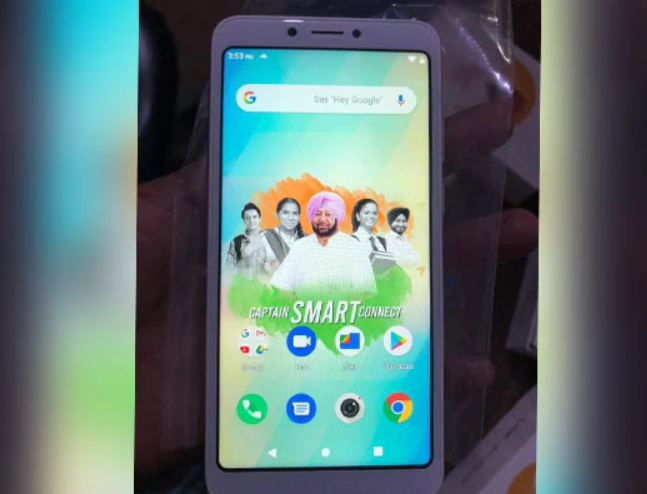To increase access to the growing online teaching culture in India, the Punjab government aims to distribute smartphones to students in the state. This shall be done on August 12, under a new scheme to help them access educational content and other learning material, especially during the coronavirus lockdown.
The Punjab government said that under the new scheme it would start distributing smartphones starting on August 12. To avoid large gatherings and adhere to social distancing norms, the government has planned to conduct a distribution drive in 26 different locations across Chandigarh and Punjab.
Before coming to power in 2017, Congress had said it would distribute free smartphones to youth in the state. During the scheme’s announcement, Chief Minister Capt Amarinder Singh said his government had fulfilled its promise to the people and mainly youth by distributing state-of-the-art smartphones.
The procedure
During the launch, all district headquarters and important towns in the state will be covered. For every town or district, a maximum of 15 students will be invited to the distribution centres.
Class 12 students from state government schools will receive smartphones immediately. Through a letter, the government communicated with deputy commissioners in the state to organize a small function following the required safety protocols.
Under the scheme, the state government is committed to providing over 1.78 lakh smartphones to Class 12 students by November 2020. The first consignment of 50,000 smartphones is to be distributed starting on Wednesday.
In the wake of the COVID-19 pandemic, many private and government schools across the country have suspended classes on campus. E-learning has emerged as a replacement for classrooms closed due to the virus.
E-learning has gained momentum across the country as schools try to continue teaching through the use of technology. Parents also started to adopt the new trend in the Indian education system.
According to a survey by ed-tech unicorn BYJU’s three in every four parents are willing to continue online teaching even after the schools reopen. Nearly 70 percent of parents said their children used online learning for the first time since the pandemic.
Around the world, over 1.26 billion children are affected due to the closure of schools amid the pandemic, according to UNESCO. Of which 326 million students belong to India and are still confused regarding the reopening of their schools.
The growing amount of e-learning has led to a sudden surge in the use of video conferencing tools all across the world and India is no exception. Online classes on Zoom, Whatsapp, Google Meets, and Skype have become a new normal for students, parents, and teachers.
Missing out
Students in urban areas have a mobile phone or personal computer to attend the classes. In some cases, parents are giving their mobile phones to kids to attend. However, In rural areas, the situation is quite opposite as access to the internet and smartphones is hard.
According to a survey by the National Sample Survey conducted in 2017-18, less than 15 percent of Indian households have internet connection in rural India while in urban Indian households 48 percent have an active internet connection.
To help students from missing out on the classes, State governments, NGO’s and private players are working hard to alleviate the difficulties. Punjab government’s plan to distribute smartphones is focused on helping students who are missing out on the classes.
Smartphones with all applications to access the online class rate start at around Rs 7000. Families who depend on daily wages and already face a hit on their income due to the pandemic are unable to afford a smartphone.
Raising Health issues
When the lockdown was implemented on March 25, students were forced to spend most of their time at home. With schools shut and reduced physical activities, children are facing pressure and turning in to more aggressive and violent.
Online classes start from 09:00 am and continue till evening as regular school timing. During school, students had enough time to divert their minds from learning and spend time with friends and play. This helped in balancing the life of a student.
However, now students are spending the whole day watching a smartphone or computer screen which can leave a harsh impact on their eyes at a young age. Doctors are advising students to blink their eyes at least 10-15 times every minute while watching the screens.
.

